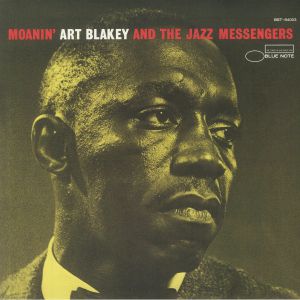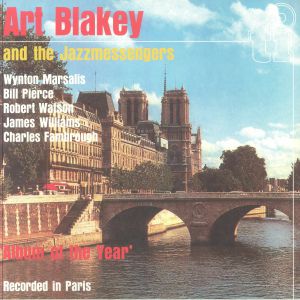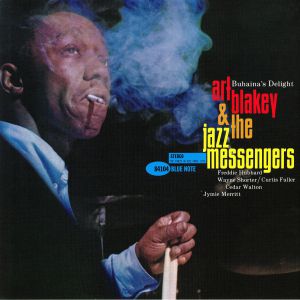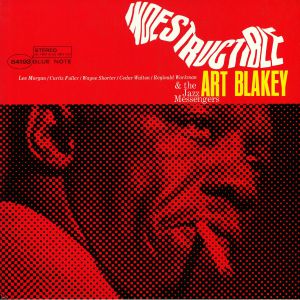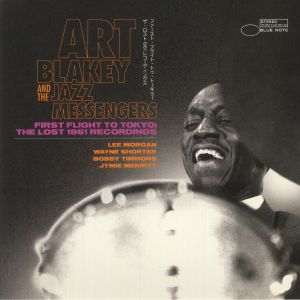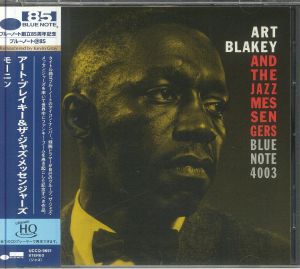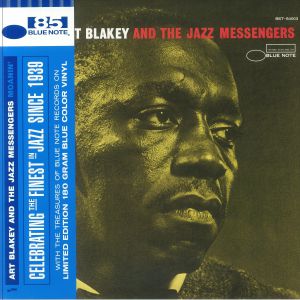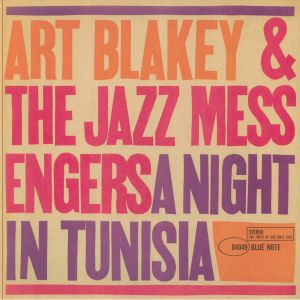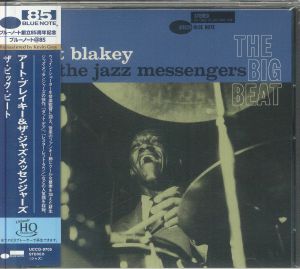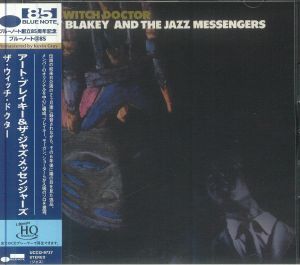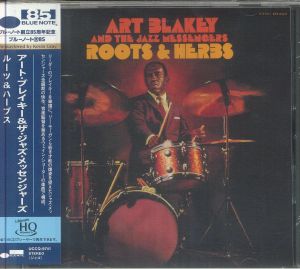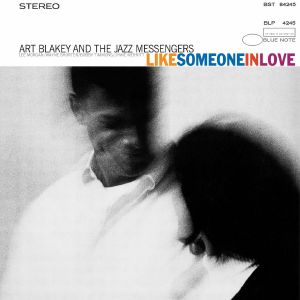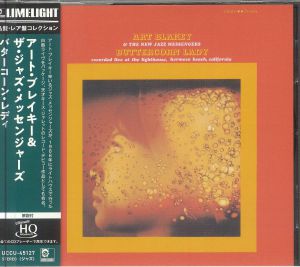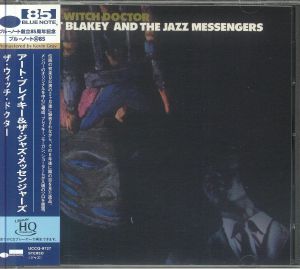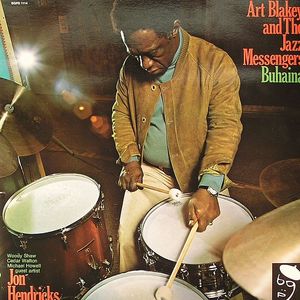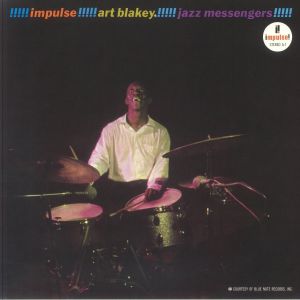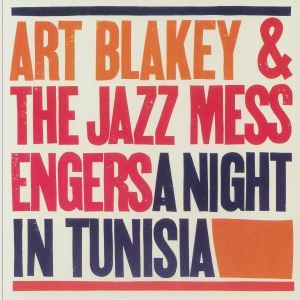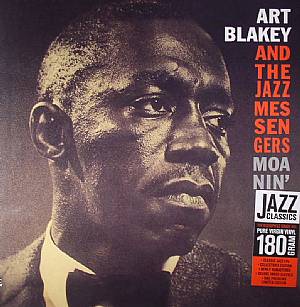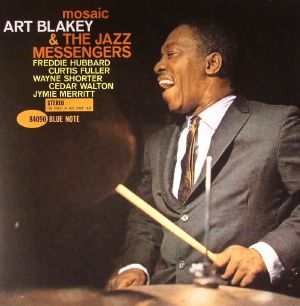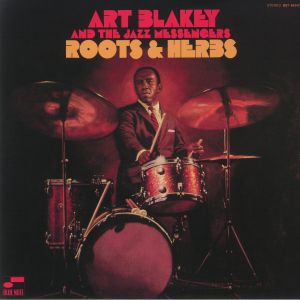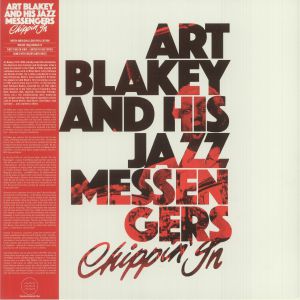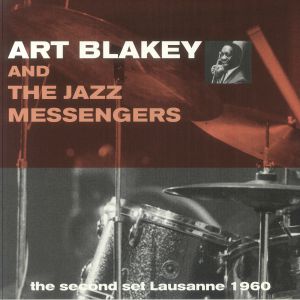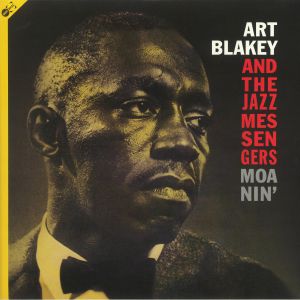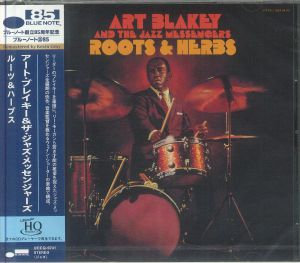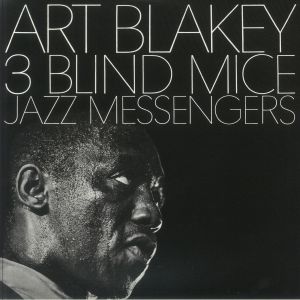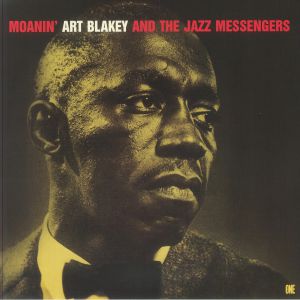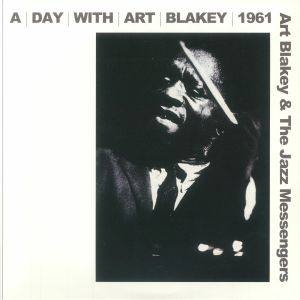Back catalogue: Jazz
Juno's full catalogue of Jazz
Alben
Mosaic (remastered) (UHQ-CD with obi-strip)
Cat: 589038 6. Rel: 28 Feb 25
in stock $20.10
Moanin' (reissue) (180 gram audiophile vinyl LP)
Cat: 746568. Rel: 09 Apr 21
in stock $26.90
Album Of The Year (reissue) (180 gram audiophile vinyl LP)
Cat: MOVLP 3861. Rel: 07 Jan 25
Review: This 1981 jazz masterpiece showcases a remarkable ensemble performance, capturing the essence of both tradition and innovation. The album features a young, vibrant lineup, with standout contributions from trumpet, saxophone and piano, each player bringing a unique voice to the compositions. The interplay between the musicians is seamless, with the rhythm section providing a dynamic and supportive foundation, while the horns soar with bold, searing solos. The compositions are varied, with mid to up-tempo tracks that never feel repetitive, driven by intricate arrangements and vibrant melodies. The drumming is particularly exceptional, with complex rhythms that weave in offbeat syncopations and ghost notes, adding an extra layer of excitement to every track. The cohesion of the ensemble is palpable, as each player seems in tune with one another, creating a sense of unity that elevates the music. The solos are both lyrical and energetic, with moments of searching intensity that reflect the band's deep understanding of jazz language. While it's an updated take on the modern jazz sound, the album maintains the urgency and spontaneity of the genre's golden age.
… Read more in stock $30.87
Buhaina's Delight (reissue) (180 gram vinyl LP)
Cat: 083820 8. Rel: 10 Jan 20
in stock $29.74
Cat: 807387. Rel: 15 Nov 19
in stock $22.64
in stock $22.64
First Flight To Tokyo: The Lost 1961 Recordings (limited gatefold 180 gram vinyl 2xLP + booklet + postcards)
Cat: 359528 6. Rel: 10 Dec 21
Review: First Flight to Tokyo: The Lost 1961 Recordings is sure to be a real thrill for fans of Art Blakey and his Jazz Messengers. It is a never before rebased or heard recording of a show they played at Hibiya Public Hall in Tokyo on January 14, 1961. The group was one of the first to tour the country and enthralled caudices everywhere they played. At the time, the band was made up of Lee Morgan on trumpet, Wayne Shorter on tenor sax, Bobby Timmons on piano and Jymie Merritt on bass and for this set they performed plenty of classics such as Charlie Parker's 'Now's the Time' and Thelonious Monk's 'Round About Midnight.'
… Read more in stock $49.55
Cat: 377125 3. Rel: 04 Apr 14
in stock $26.34
Moanin' (remastered) (UHQ-CD with obi-strip)
Cat: 657292 1. Rel: 15 May 25
in stock $18.12
Moanin' (limited 180 gram blue vinyl LP with obi-strip (indie exclusive))
Cat: 585922 8. Rel: 08 Aug 24
Review: Art Blakey & The Jazz Messengers' Moanin' is a quintessential hard bop album that effortlessly stands out with its classic, distinctive sound. Released in 1958, this seminal record features a lineup of jazz luminaries, including pianist Bobby Timmons, saxophonist Benny Golson, trumpeter Lee Morgan, and bassist Jymie Merritt. Despite its adherence to traditional hard bop elements, the album shines with an exceptional blend of precision, enthusiasm, and depth. The title track, 'Moanin',' composed by Timmons, sets the tone with its infectious groove, while Golson's contributionsi'Along Came Betty,' 'Blues March,' and 'Are You Real?'iadd a range of emotions and rhythms, from lyrical to powerful. The standout 'The Drum Thunder Suite' shows Blakey's unparalleled drumming strength, combining dynamic rhythms and Latin influences. The album's meticulous craftsmanship ensures that every track maintains the listener's attention, offering a mix of accessible melodies and intricate musicianship. Blakey's leadership and the band's chemistry result in an album that is not only a highlight of hard bop but also a compelling entry point for jazz enthusiasts. Moanin' remains a timeless classic, celebrated for its masterful execution and enduring impact on the jazz genre.
… Read moreGespielt von: Juno Recommends Jazz
in stock $42.19
A Night In Tunisia (Classic Vinyl Series) (180 gram vinyl LP)
Cat: 650076 4. Rel: 17 Oct 24
A Night In Tunisia
Sincerely Diana
So Tired
Yama
Kozo's Waltz
Review: One of the finest line-ups of Art Blakey & The Jazz Messengers came together when saxophonist Wayne Shorter joined trumpeter Lee Morgan, pianist Bobby Timmons and bassist Jymie Merritt, as featured on this now newly reissued 1960 album A Night In Tunisia. The album kicks off with a blazing rendition of Dizzy Gillespie's iconic piece - which lends its name to the LP - while the rest of the set highlights original compositions from the new band members. This Blue Note Classic Vinyl Edition is a stereo, all-analogue release mastered by Kevin Gray from the original master tapes, so sounds superb.
… Read moreGespielt von: Juno Recommends Jazz
in stock $30.87
The Big Beat (CD with obi-strip)
Cat: 657294 0. Rel: 15 May 25
The Chess Players
Sakeena's Vision
Politely
Dat Dere
Lester Left Town
It's Only A Paper Moon
in stock $19.24
The Witch Doctor (UHQ-CD with obi-strip)
Cat: 658144 5. Rel: 16 May 25
in stock $19.24
Roots & Herbs (CD with obi-strip)
Cat: 752246 1. Rel: 15 May 25
Ping Pong
Roots & Herbs
The Back Sliders
United
Look At The Birdie
Master Mind
in stock $19.24
Just Coolin' (heavyweight vinyl LP)
Cat: 508650 23. Rel: 17 Jul 20
Review: Jazz fans are in for a real treat here as Blue Note unleash a never before heard studio album by Art Blakey & The Jazz Messengers. It was recorded back in 1959 at the legendary Rudy Van Gelder's Hackensack studio and has Lee Morgan, tenor saxophonist Hank Mobley, pianist Bobby Timmons, and bassist Jymie Merritt all playing as part of the recording. As the title suggests, it's a breezy, super cool record with seductive trumpets and icy drums all next to neat keys that encourage you to gently bop. After months of waiting, it proves more than worth all the anticipation.
… Read moreGespielt von: Juno Recommends Jazz
in stock $25.48
Like Someone In Love (Classic Vinyl Series) (180 gram vinyl LP)
Cat: 651496 4. Rel: 16 Jan 25
Review: Recorded during the same intense August 1960 sessions that produced another iconic album, this release showcases the brilliance of a hard-bop quintet, combining fiery improvisation with introspective ballads. The album opens with a standard tune that became a regular feature in the group's live sets, setting the stage for a collection of original compositions. Lee Morgan's 'Johnny Blue' stands out with its infectious blues line, while Wayne Shorter's compositionsiparticularly 'Sleeping Dancer Sleep On'ireveal his growing mastery of melody and complex chord changes. The track is a highlight, with lush, gospel-funky piano and a slow, stunning waltz rhythm. Shorter's 'Noise in the Attic' is a powerful drum showcase, allowing for blistering solos from the horns but placing special emphasis on the piano work. 'Giants', another Shorter composition, closes the album with a hard-bop anthem that keeps the energy high and steady throughout. While Blakey typically dominates with his high-energy drumming, here he takes a more restrained role, allowing the melodies to breathe. The synergy of the quintet is palpable, with Bobby Timmons' percussive piano providing a dynamic counterpoint to the horn lines.
… Read more in stock $29.74
Buttercorn Lady (UHQ-CD with obi-strip)
Cat: UCCU 45127. Rel: 03 Sep 24
in stock $20.37
The Big Beat (UHQ-CD with obi-strip)
Cat: UCCQ 9705. Rel: 12 Jul 24
in stock $20.37
The Witch Doctor (remastered) (UHQ-CD with obi-strip)
Cat: UCCQ 9727. Rel: 19 Dec 24
in stock $20.10
in stock $20.37
Art Blakey & The Jazz Messengers (Verve By Request) (limited gatefold 180 gram audiophile vinyl LP)
Cat: 602465 5226249. Rel: 12 Sep 24
Review: From the opening notes of the iconic 'Alamode,' this album bursts with beauty. It features the first sextet lineup of Art Blakey's Jazz Messengers and showcases a young Wayne Shorter on tenor saxophone, Lee Morgan on trumpet, Curtis Fuller on trombone, Bobby Timmons on piano, and Jymie Merritt on bass. The band relentlessly drives the pace with each track, making a powerful impact throughout and for that rowans it became one of many Art Blakey classics. This Verve By Request release is pressed on 180-gram vinyl at Third Man in Detroit, which as you will know means it sounds second to none.
… Read more in stock $37.09
A Night In Tunisia (reissue) (180 gram vinyl LP)
Cat: SRPD 0049. Rel: 01 Jan 90
in stock $16.98
Moanin' (remastered) (limited 180 gram vinyl LP)
Cat: 771792. Rel: 20 Mar 14
The Drum Thunder Suite (First Theme drum Thunder/Second Theme: Cry A Blue Tear/Third Teme Harlem's Disciples)
Gespielt von: Juno Recommends Jazz
in stock $16.42
Mosaic (75th Anniversary Edition) (remastered) (heavyweight vinyl LP)
Cat: 470856 0. Rel: 22 Jan 15
Gespielt von: Juno Recommends Jazz
in stock $24.64
Moanin' (limited 180 gram transparent red vinyl LP)
Cat: 950623. Rel: 01 Jan 90
in stock $18.97
Roots & Herbs (Tone Poet Series) (gatefold 180 gram audiophile vinyl LP)
Cat: 884052. Rel: 04 Dec 20
Review: Art Blakey's greatest album with the Jazz Messengers is this one, Roots & Herbs, and it is probably one of his least well known. The 1961 line up of this famous jazz collective had the esteemed Lee Morgan on trumpet, with Jymie Merritt on bass, Wayne Shorter on tenor saxophone and piano played by Bobby Timmons. It was of course laid down in the most famous studio of them all, Rudy Van Gelder's studio in New Jersey, and take sin six hard bp jams, the playful title track, and the superbly inventive 'United.' Get to know.
… Read moreGespielt von: Mukatsuku Records Chart
in stock $49.55
Chippin In (180 gram clear vinyl 2xLP + insert with obi-strip)
Cat: TWM 70LITA. Rel: 12 Mar 22
in stock $35.11
in stock $22.64
in stock $18.12
Roots & Herbs (remastered) (UHQ-CD with obi-strip)
Cat: UCCQ 9741. Rel: 14 Nov 24
Review: Roots and Herbs, recorded by Art Blakey and The Jazz Messengers in 1961, was finally released by Blue Note Records in 1970ialmost a decade later. Featuring compositions by Wayne Shorter, the album showcases Blakey's all-star lineup: Shorter on tenor sax, Lee Morgan on trumpet, Jymie Merritt on bass, with alternating pianists Bobby Timmons and Walter Davis Jr. Despite its hard bop energy, the album arrived at a time when fusion dominated jazz, leading to Roots and Herbs being somewhat overlooked. The album's vibrant performances and intricate solos highlight the Messengers' hard bop brilliance. Tracks like 'Ping Pong, 'Roots and Herbs', and 'Master Mind' capture the beauty of Blakey's dynamic leadership. Each musician delivers top-tier performances and Blakey's powerful swing provides the backbone throughout. Though delayed, Roots and Herbs is now being appreciated as one of Blakey's finest works, a testament to both the talent of the Messengers and the timelessness of hard bop. This reissue reaffirms the album's place as an essential piece of jazz history, now reaching a broader audience. This special edition comes on UHQ-CD.
… Read more in stock $19.82
Cat: UAJ 14002LP. Rel: 04 Apr 25
in stock $18.40
Moanin' (reissue) (limited 180 gram vinyl LP)
Cat: 291025. Rel: 07 Apr 25
in stock $16.98
A Day With Art Blakey 1961 (reissue) (gatefold purple vinyl 2xLP)
Cat: RM2LP 5363C2. Rel: 29 Jan 25
in stock $38.50
The Complete 3 Blind Mice (2xCD)
Cat: 27361. Rel: 08 May 24
in stock $11.05
A Day With Art Blakey 1961 (reissue) (gatefold metallic silver vinyl 2XLP)
Cat: RM2LP 5363. Rel: 21 Oct 24
in stock $39.07

 USD
USD







